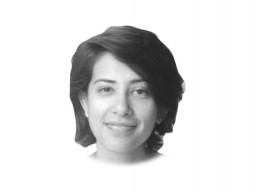
In his long poem, Baghdad Ki Aik Raat (a night in Baghdad), written 75 years ago this year, the great Urdu poet Ibn-e-Insha shares his anguish as he imagines himself sitting on the banks of the great river. In one part of the poem, he imagines how a guard in a glittery palace in the glory days of Baghdad, who was probably enslaved as a young boy, imagines his life. What desires he may have? How does he see the world and his future? Whose company does he long for? Ibn-e-Insha does not provide any answers — but he asks the right questions.
Perhaps this is a question we all should also ask ourselves. In our cities and towns, at our homes and at our workplace, there are plenty who remain nameless and invisible to us. Just because the readers of this column have won a privilege lottery does not mean that others do not have goals, aspirations, desires or ideas.
The recent census data, compiled by the Pakistan Bureau of Statistics, and available on their website paints a deeply painful picture. There is a lot to unpack about education, access to sanitation, population density and other areas. But what really got my attention was the last section (Table 26). The categories describes how many residences are in a high rise, how many are independent house-type structures, etc. And then, the ninth column is titled “Jhugi/Jhompri/Tent/Cave”. There are half a million such structures in the country. Assuming the average family size of 6 (coming from the census itself), this means nearly 3 million people live in tent or a cave-like structure. This is just heart-breaking.
Here, it is important to recognise that homelessness is our collective shame as a society, it is a global issue and one that is seen in some of the richest countries of the world. But this is different. For starters, this is not homelessness. Second, majority of such structures in Pakistan are in rural areas (which is not the case in many other countries), and third, homelessness is many parts of the world is not necessarily intergenerational. The situation in Pakistan is: people are born in these structures, they live their whole life in these awful places, and die there only.
For a moment, let us (if we can) imagine, the life in a place like that? It is not simply the absence of a roof or walls of concrete that is the issue here, it is also a complete absence of any infrastructure. It is likely that there are no schools and no clinics for anyone who lives there. For most of us, and perhaps myself included, it is impossible to imagine life in a Jhugi. Even when I have spoken to people living in informal settlements (in Pakistan and elsewhere) as part of my work, or have spent time with them, I know that I have the privilege of returning to the safety of my home, having a meal with friends, and not worrying about clean water. I do not know the anguish, agony or hopelessness that is a permanent part of their lives. I do know, however, that the children there are just as smart as my own, and men and women just as sharp and hardworking as anyone in my family — perhaps a lot more. They are just as eager to see a better world for their children as myself and my friends, they just want the burden of life to become lighter as any reader of this article would.
As I stared at the statistics, I did not have any answers, only questions to myself and everyone around me. Questions about injustice, apathy and our collective moral failure.














COMMENTS
Comments are moderated and generally will be posted if they are on-topic and not abusive.
For more information, please see our Comments FAQ